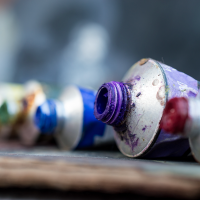
United Kingdom
Immerse yourself in the pulsating energy of the United Kingdom's contemporary art landscape. Steeped in history yet invigorated by cutting-edge experimentation, it is home to notable institutions such as London's Tate Modern and the Serpentine Galleries. The UK is also the birthplace of distinguished artists like Damien Hirst, whose installations challenge conventions, and Tracey Emin, acclaimed for her deeply personal multimedia work. The annual Frieze London brings together the brightest talents from around the globe, further cementing the UK's status as a contemporary art powerhouse. Delve into the rich tapestry of UK contemporary art at Composition Gallery's website.
Show All
- Show All
- Established
- Discoveries
A,B,C
ARTWORKS RELATED TO UNITED KINGDOM
Julian Opie
Long Hair from Old Street Walkers, 2022
Sculpture / Object
Mixed Media
Inquire For Price
Damien Hirst
All You Need Is Love Love Love, 2010
Limited Edition Print
Screen-print
USD 70,000 - 80,000
David Shrigley
I Will Not Allow The Dark Skies To Affect Me, 2025
Limited Edition Print
Screen-print
Inquire For Price

Woodcut is a printing technique where an image is carved into the surface of a woodblock using gouges, with the remaining flat surface holding the ink for printing. The areas cut away by the artist do not carry ink, while the uncut areas do, producing the desired print. The carving follows the wood's grain, unlike wood engraving, where the block is cut across the end-grain. Ink is applied to the surface with a roller, ensuring only the flat, uncarved areas receive ink, leaving the recessed, non-printing areas clean.

Ceramics is an art form that involves creating objects from clay. The clay is shaped, molded, and formed by hand or with specialized tools, then baked (or fired) in a high-temperature oven called a kiln. Decorative colors and special glazes can be applied to the surface, which are then fired again to finish the piece.





















